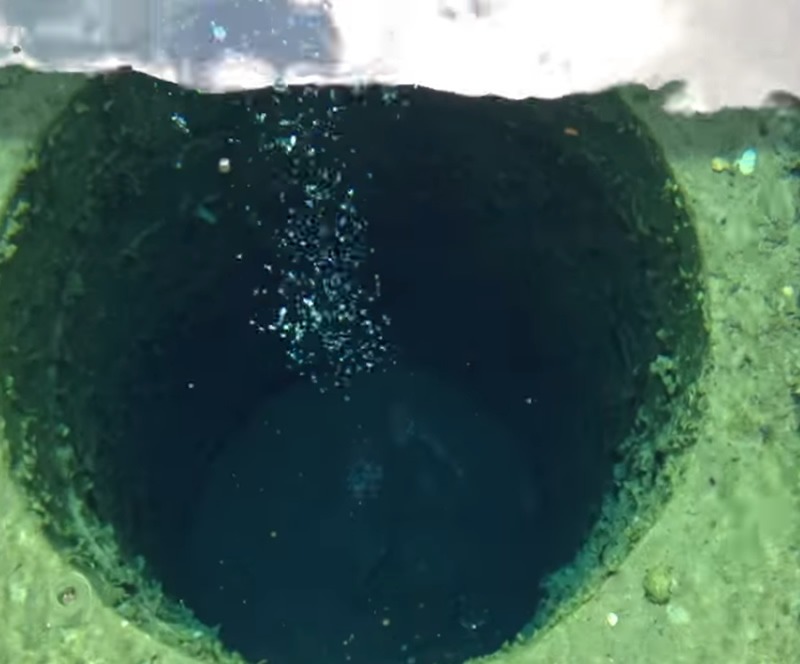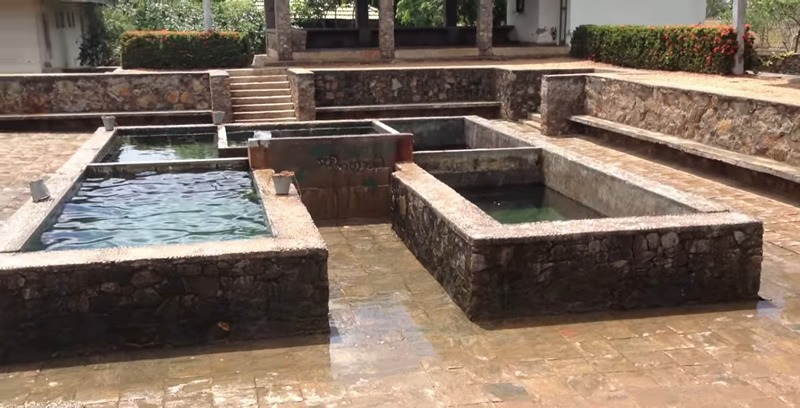Seeking the Healing Effect of Geo-thermal Bath
Sitting near the southern border of Sri Lanka Madunagala hot water spring bestow its natural healing power on thousands of people every day.
Hot springs, herbal baths, steam rooms, medicinal bath, saunas– spa culture can be found in various forms in all around the world, relax and enjoy the healing effect of the water like a local is the main attraction in many destinations. The history of using herbal baths, steam rooms, medicinal bath, saunas– a spa in Sri Lanka goes back to many millennia. It was part of the traditional healing system known as Ayurveda.
Ayurveda is still playing an important role as an alternative healing method to western medicine. Ayurveda is being widely practised in Sri Lankan society even today.
This traditional healing system has been able to get the attention of foreign travellers as well. A large number of foreign travellers flock into Sri Lanka Ayurveda resorts, in order to benefit from the healing effect of Ayurveda. Ayurveda holiday packages of Sri Lanka are very popular among the German travellers, Japanese travellers and UK travellers.
Sri Lanka is not only a leisure holiday destination any more. Other branches of tourism such as medical tourism, adventure holidays, cultural tours, nature tourism are also getting popularity.
The bathhouse culture has entwined with many modern societies due to its healing effect, and which is an omnipresent practice in order to relax toxin trapped in the body by using the heat. Actually releasing the body toxin using heated water is in practice for many millennia, dates back to Neolithic age when the folk of the nomadic tribe found relief from the bitter cold by soaking in thermal hot water springs that they discovered in various parts of the world.
The history of public bath is going back to 2500 BC, with the discovery of a public bath in the Indus valley, in the historical site of Mohenjo-Daro. The huge pool that was discovered in Mohenjo-Daro named as “The great bath” and was constructed baked bricks. The pool was excavated in modern-day Pakistan in the early 19s. According to the anthropologists it could have been used as a sacred temple because cleanliness and bathing had been an integral part of many religions and beliefs.
After my recent visit to Ridiyagama safari camp, it is time for me to explore a public bath in southern Sri Lanka, what makes it stands from the crowd, you might be wondering. Yes, it is important because it is geothermal spring, which is located very close to the open Ridiyagama open zoo. I’m on an assignment to makes a publication on Madunagala hot water spring, which is one of the popular tourist attractions in the region.

Throughout the last several decades, Madunagala hot water spring has been enjoyed by all classes. People who work in nearby paddy-fields used to visit this public bathing spot, one of the favourite places to have a wash, while pilgrims who visit Kataragama temple from far away cities end up with a refreshing bath at Madunagala hot water spring, before heading to their home town. It does not have a spiritual experience like Russian Banya, however, the healing effect of geothermal water is widely accepted all around the world.
The geothermal spring of Madunagala is falling into the category of warm thermal springs with a temperature range from 34 ºC to 46 ºC. The water of Madunagala geothermal spring is classified as weakly basic, which indicates the invariable pH from 6.8 to 7.9.
The geothermal hot springs is a manifestation of the heat generated through heat sources in the subsurface such as deeply extending fracture zones or concealed or huge body of hot dry rocks. In Sri Lankan case dry hot rocks have been identified as the geothermal energy that makes the hot water in geothermal spring.
Southern Sri Lanka is peaceful and the inhabitants too, there had not been any geological phenomenon such as Spewing volcanoes, forbidding lava or earthquakes. And the geologists have confirmed the hot springs of Madunagala is not a byproduct of a volcano, like hot springs found in Iceland.
Madunagala hot water spring is a southern Sri Lankan icon, is a natural spa set in about 80 km from the popular pilgrimage site of Kataragama. About 3 hours on the motorable road from Tissamaharama of southern Sri Lanka, where most foreign travellers opt to stay when they visit Yala national park. Madunagala is a tract of protected land that gives you natural healing power. The entire region is surrounded by thick vegetation and isolated rice paddies, adding beauty to this picturesque countryside.
There are 5 water tanks at the site with water of varying temperature, the cluster of tanks are built in a is landscaped garden with granite stones and cement, it has a well-built deck as well as few changing rooms. The mineral-rich, geothermal water discharged into the tank from deep down of earth, the tanks are built on the ground with walls about 3 feet in height.
The history of hot springs is going back to the early 19s when British administration prevailed on the island. On the account of discovering the site, Mr Lenard wolf, then assistant governor of Hambantota district should be given a special credit, for his daring effort to reach the hot wells on a journey through the paddy fields, lakes, and animal infested jungle to collect samples.
According to the remarks made by Mr Leonard, it had been a jungle and ether were no human inhabitation as he was venturing to the hot springs, however, now there are few settlements in the vicinity of the hot springs.
After the discovery of hot springs by Leonard wolf, it was largely neglected and it was not in use for many centuries, mainly due to the unavailability of proper access. Not only the area where hot springs are located but also the entire southern region was underdeveloped and the infrastructure was not in place until early 1960, until the beginning of the Udawalawe development project.
Under the Udawalawe development project entire southern Sri Lanka was illuminated, especially the basin of Walawe river, a large number of farming families were resettled and all infrastructures came to being under the project. Most importantly the newly built road network crisscrossing the entire region and connected all corners of Walawe river basin.
Death of two elephant caves in the 1970s, by falling into the well is the most reason incident that led the authorities to pay their attention to the site. Some of the official, who arrived at the site, even did not have an idea about the existence of this natural thermal well.
As the news of the thermal wells were gone far and the wide large number of people started to gather in the area to explore the hot wells, it was something that they had not to experience before. In the 1980s, two tanks were built for bathing purposes, with the help of Mahaweli development authority.
In 2000, hot wells of Madunagala identified as a place of potential to be developed as a tourist attraction by the southern development authority, resulting in further improvement to the site. Kids play area, aquarium and a mini-zoo also can be seen at the site today.
“We are making this pilgrimage tour to Kataragama every year from Puttalam, and whenever we go back, we are stopping here to have a bath, this is amazing the water is already heated and coming from the ground!” Appuhami said.
Today there are five tanks altogether at the site and the main tank is in the centre and has the highest water temperature; all other tanks are built around the main tank and has different water temperatures. “It feels nice after the thermal water bath; it is a common belief that geothermal water has good healing power,” said Appuhami.
“We are visiting Madunagala hot water spring for last 20 years, there was only a gravel road during early days,” said Silva, an aged pilgrim, who had been to Kataragama temple with his grandchildren and rest of the family.
Today Madunagala hot water spring is in the bucket list of every traveller, who makes their journey to the temple of Kataragama, in southern Sri Lanka.
It has become of the very popular tourist places in southern Sri Lanka and visited by thousands of local travellers every day. There is a huge gathering, especially on long weekends and holidays. If you drop into a sauna or a hot spring managed by a private firm it is very expensive and the thermal bath is one of the most expensive activity. However, at Madunagala, the local government charges a nominal fee and you can spend as much time as you like.






